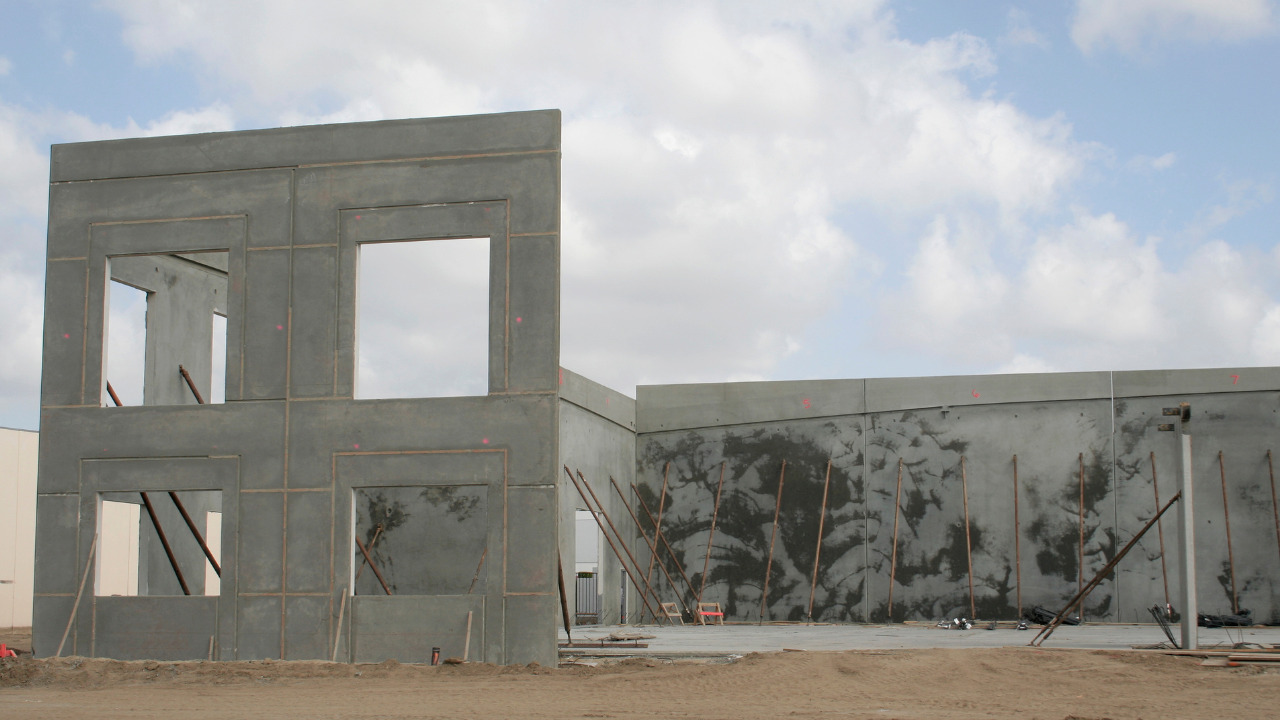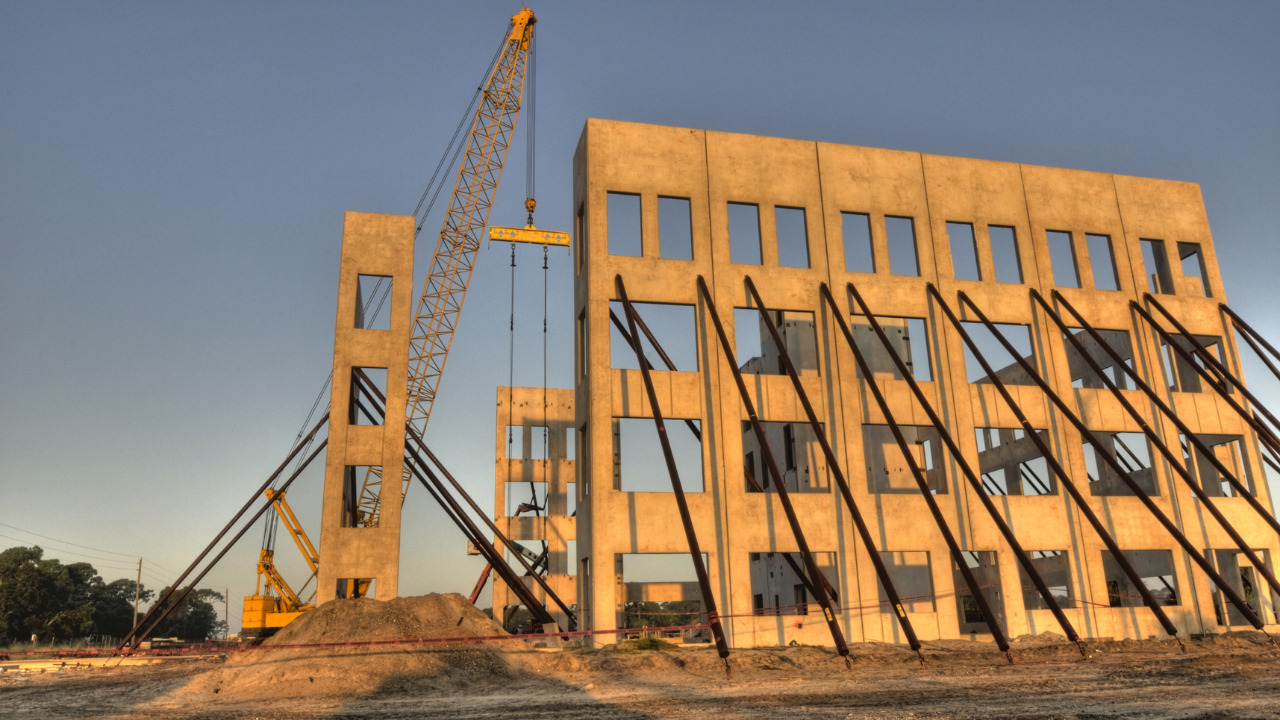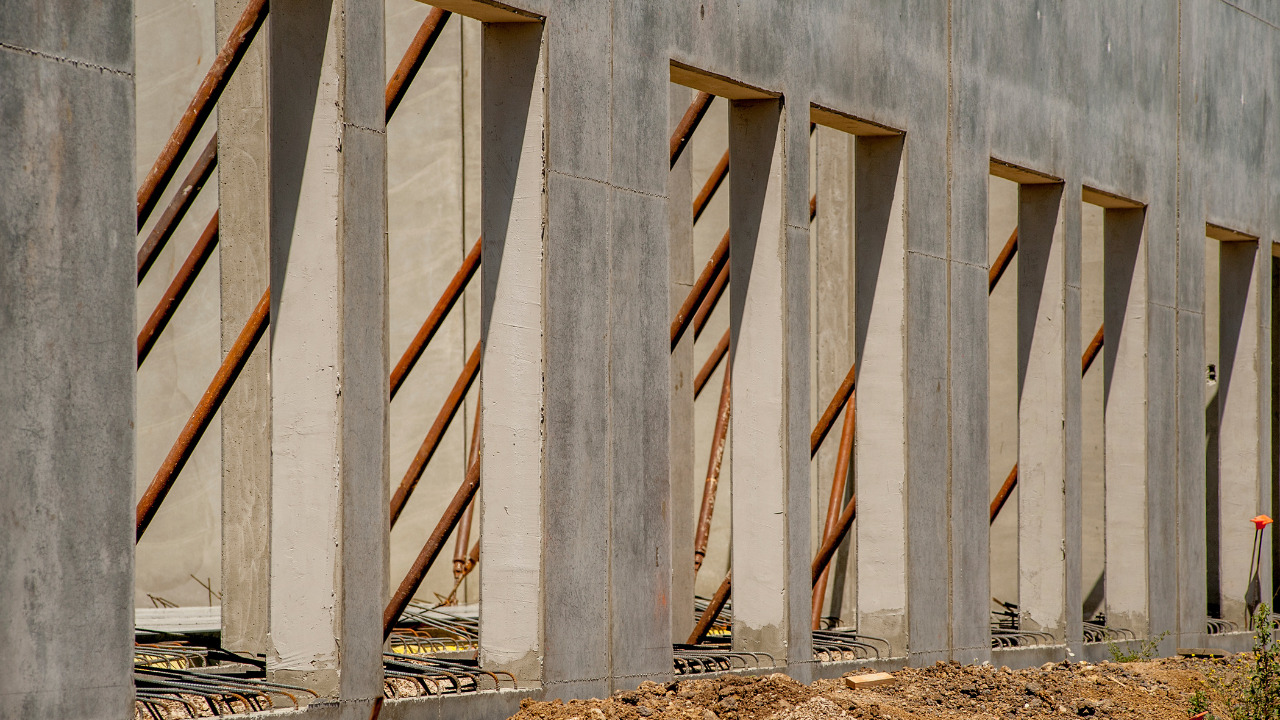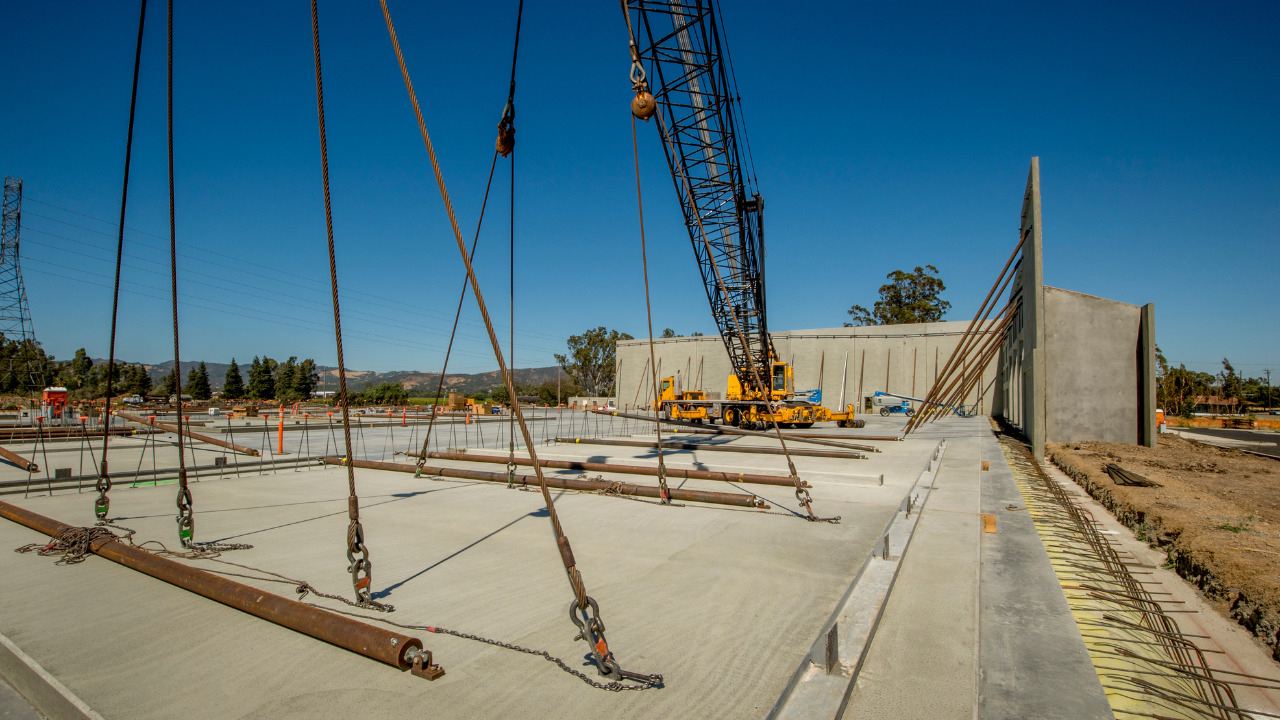The advancements in our construction sector are taking place at an incessant speed. Remember a time when we only had a few raw materials for building purposes and now we have made a factory out of it. The range of materials and the wide spectrum of their performance characteristics under an even wider ambit of environmental and site conditions has taken the construction work to a whole new level.
The same applies to construction techniques. Previously, the working crew had to spend months in executing a constriction work which has now shrunk to days. One such technique of expediting the construction work while not compromising on structural integrity and strength is tilt-wall construction. Here is a guide to know all about this advanced construction method along with some of its limitations.
Tilt-wall construction (also called tilt-up construction) is a technique that will make your construction work fast-forward and efficient. In this method, the load-bearing structural walls of a multi-story or single-story building are all horizontally cast on ground or on foundation slab as concrete panels (that may or may not be textured) and later on, they are simply lifted up using a crane and secured into their position.

This type of building system can be virtually applied on every building type including schools, libraries, office buildings, hospitals, etc.
A construction site where tilt-up technique is to be used is a dynamic environment often with multiple stages of construction happening simultaneously. In addition, the site for this type of work is usually flat with plenty of room to maneuver large pieces of heavy equipment.
A unique feature of tilt-wall construction is that prior to the actual construction, hours are spent on site layout plans and sequencing diagrams. Putting too much detail is essential to ensure smooth movement of crane and to eliminate costly and dangerous unknowns.
Table of Contents
Types of Tilt-Up Construction
Tilt-up construction can essentially be of two types that are categorized based on where the panels are cast.
Precast Tilt-Up Construction
In this type of construction, the panels that are to be lifted or tilted up are not cast on the building site, rather, they are cast off-site in a manufacturing plant or factory, hence the name precast. During manufacturing, the necessary reinforcement is placed within the slab panels.
These panels are later on transported to the site where they are placed on a horizontal bed first. From there, these are lifted up using cranes and are secured in place.
Precast panels are made under quality control and constant monitoring, therefore, the panels can be expected to depict consistency in their performance unlike the ones cast on-site. The curing of the panels for strength gain purposes is also carried out in the factory and this can substantially reduce the construction time required for your project because at the site, you only need to assemble the parts and lift them up.
Cast In-Situ Tilt-Up Construction
As the name pictures, cast in-situ tilt-up construction involves casting and curing of the reinforced concrete panels at the building site. Therefore, the materials and equipment are to be procured and brought to the site in this method.
When casting of concrete is carried out on site, the formwork is stripped off only after proper curing is achieved and the member has gained the major faction of its compressive strength. This means that you will need to wait for concrete hardening, curing and strength gain, all of which was not needed at site in case of precast panels.
However, with in-situ casting, you will have greater flexibility of operation and you can go for customizing your building interior even if you plan to do so at the eleventh hour.
Process of Tilt-Up Construction
The process of tilt-wall or tilt-up construction essentially consists of 7 important steps and we will walk you through all of these one by one.
-
Site Preparation
This involves procuring and gathering all the necessary materials and equipment required for the job on the construction site. The ingredients include concrete raw materials, reinforcing steel, etc.
-
Pouring of Concrete Foundation Slab
Following the preparation of site, the foundation slab is poured on top of which the forms are laid for casting of tilt-up panels. The surface of concrete is properly worked upon using troweling machines that give it a smooth, flat finish.
-
Forming Wall Panels and Adding Form liners
In this step, the panel forms are assembled on the floor slab and they serve as molds or casting surface for the concrete. Each form provides the panel’s exact shape and size along with openings for doors and windows. There are many products available in the market for forming tilt-up panels but majority of them utilize dimensional lumber boards to form the edges of panels and any openings.
The casting surface could be the building slab itself, a temporary recyclable casting slab or a combination of both. It is important to ensure that the casting surfaces should be perfectly flat and devoid of imperfections as much as possible. This is because the titled panels mirror the casting surface and any irregularity in them will directly affect the wall when it is lifted up.
-
Panel Reinforcement and Inserts and Embeds
The steel grids are then tied to reinforce bars into each form and the purpose of doing so is to give the panels additional structural integrity. The workers also install inserts and embeds that serve the purpose of lifting the panels later on.
A variety of embedded products are available to create forms and textures on the face of the panels. The embedded products get bonded to the concrete as it gets hardened and these get secured in place forming the building façade.
In case no embedded products are provided, there is a risk of panels sticking over the foundation slab. To prevent this from happening, a release agent or bond breaker is applied before pouring the concrete and this helps prevent sticking and allows panels to be lifted easily.
Lifting and brace inserts are carefully placed in their designated locations and secured to the reinforcement.
-
Pouring Concrete and Adding Insulation
When the reinforcement, embeds and bracing inserts are all secured into place, only then the pouring operation of concrete is carried out. Concrete is poured into the prepared forms to create the panels. Sandwich insulation is also encased into each building panel to give tilt-up structures true edge-to-edge insulation.
Care ought to be exercised when placing concrete to avoid displacing the elements tied into the structural grid. A vibrator is used to thoroughly consolidate the concrete and remove the trapped air within. The top side surface of the panels (which mostly is the interior surface of the wall) is finished as per the desired project specifications pertaining to concrete finishing.
Following this, the panels are cured to allow them to attain the target compressive strength upon the completion of hydration reaction.
-
Lifting Concrete Panels in Place
The concrete panels are left for hardening after which the formwork is stripped off and the panels are connected to a crane. The crane then lifts them from the floor slab into position. The workers on site then connect the panels’ braces to the slab.
The above process is repeated until all the panels are pulled up and secured in place.
-
Panel Finishing and Caulking Joints
Once the panels are tilted up, the building begins to look like a product. The exterior wall finishes are done and the joints are also caulked to prevent water penetration through them.
Applications of Tilt-Up Construction
Tilt-up construction technique can be employed for many building types but is not recommended for high-rise buildings. However, following are a few applications of this construction technique;
- Tilt-up construction is massively used in industrial buildings because the process can be expedited without compromising on structural integrity and strength. These buildings include warehouses, factories, distribution centers, etc.
- For shopping centers and plazas, you can go for tilt-up construction. However, a large open space is required for this purpose and a prior site planning is a must.
- Institutional buildings such as schools, universities, libraries, etc. can also be constructed using this technique.
- For office and residential buildings, the tilt-up technique is equally good in terms of durability, cost-effectiveness and low maintenance requirement.
Advantages of Tilt-Up Construction
By now, you would have already determined the advantages this construction offers. However, there is still more to know and we will ensure you don’t miss out on important details. Here is the list of advantages that tilt-p construction technique provides.
- For obvious reasons, it is a fast, efficient, and cost-effective technique of constructing multi-story buildings. Unlike traditional construction in which you have to wait for the completion of one story in order to begin with the other, tilt-up construction allows for casting the entire building height of a horizonal surface in one go and then the panels are lifted up and erected in position.
- You will get a wide range of design options for tilt-up construction and you may customize the building exterior as well as interior with aesthetic design patterns, textures, and colors. This means that the aesthetic as well as structural aspect of a building is customizable.
- Since tilt-wall construction requires less labor and materials and also results in time-saving, it is a cost-effective method of construction.
- The maintenance of structures built using this technique is less and overall the building is durable and strong.
- Energy efficiency can be achieved by including insulation in the tilt-wall panels and this can help reduce the energy consumption and related costs.
Drawbacks of Tilt-Wall Construction
Although the technique of tilt-wall construction offers many advantages and can theoretically be applied to all types of buildings, it has some drawbacks and we recommend you weigh them before going for this construction technique.
- In order to go for tilt-up construction, you will need specialized equipment such as cranes, panel-lifting devices, etc. and all these will incur added costs for your project.
- If the casting site is located away from the building site, added transportation costs will be incurred depending upon the size and weight of the panels to be carried to the construction site.
- If you have cast the panels, you cannot make any amendment in the design. In this regard, tilt-up construction provides limited flexibility and making changes to the building’s layout after the panels have been cast is practically an impossible task.
- This construction technique brings to light some grave risks of a possible hazardous event or accident. In this regard, adequate safety measures ought to be taken on site to ensure worker safety.
Limitations of Tilt-Wall Construction Technique
Tilt-wall construction techniques has come limitations and cannot practically be used in all cases.
- Site limitation is the largest factor that dictates whether this construction technique is practically viable. This means that for tilt-up technique, you ought to have sufficient space on site to cast the vertical members horizontally. In addition, the ground on site should be stable and flat and should be able to bear the dead load before it is lifted up and erected. In congested urban settlements or high-population regions, the execution of this technique becomes very challenging.
- For very complex designs, the casting on flat horizontal beds will become very difficult and challenging and therefore, for such structures, this technique is not recommended.
- The building height is another limitation while going for tilt-wall technique. You cannot lift up a building that is too high because the cranes that are used to lift the panels offer this restraint. Typically, for a maximum building height of 60 feet you can go for this construction technique and beyond this, the lifting process will become very challenging and this technique is not recommended.
- For tilt-up construction, since everything is practically done on the site and a great deal of effort is put into the site work, favorable weather conditions for the working of labor are to be inspected priorly. Heavy rains, high winds and extreme weather temperatures will have a direct bearing on hampering the construction work on the site.
- Tilt-up construction is also limited by the size and weight of the panels that are to be lifted by the cranes. This will leave you with lesser design flexibility, creativity and versatility.
Precautions to be Duly Considered on Site
Tilt-up construction technique is not the safest construction method and entails a variety of safety concerns on the construction site. Therefore, due precautions ought to be taken on site to avoid any casualty and ensure quality control.
- For tilt-wall construction, make sure you deploy skilled labor that is capable of effectively using the specialized equipment and operating advanced machinery.
- The preparation of site is another crucial step in this construction technique. The site should properly be prepared to get a level foundation and the site area should be prevented from any unauthorized access.
- Since this process brings into practice some high-tech equipment, these need to be carefully inspected before use. This includes inspecting the lifting devices and cranes to ensure that they are in a good working order.
- The most important stage of tilt-up construction is the lifting process. For this purpose, proper lift planning is pivotal to ensure that the panels are lifted safely and efficiently. In other words, you need to predetermine the lifting points, the distribution of weights and the sequence of lifting.
- Equipment such as harnesses and lifelines should be used to provide protection against an unexpected panel fall while lifting.
Frequently Asked Questions (FAQs)
How are tilt-up panels connected?
There are a number of ways that can be used to connect the tilt-up panels with each other. These are as follows;
- You can use embed plate connections (that are similar to welded plates) that are embedded in the concrete panel at the time of casting. These plates protrude or come out from the panels and can be used to interlock the panels to the foundation concrete or even with each other.
- Welded plate connections are another option of connecting two panels with each other. In this method, you can weld the steel plates to the reinforcing steel in the panel and once the concrete hardens, these plates can be used as a connection to other plates and to the foundation.
- Mechanical connectors such as bolts and screws can be used in conjunction with the welded or embedded plates to connected the panels with each other.
- A bonding agent such as an epoxy or polyurethane can be used as adhesive materials to connect the panels with each other. This type of connection if often used in seismic-prone and wind-prone areas.
What should be the thickness of tilt-up concrete panels?
For this, if you look at the flipped picture of tilt-up construction, the thickness of a panel that you cast horizontally is actually equal to the thickness of the wall in a particular story as per your design. So, even if the panel is lifted up and made a wall later on, the design specifications based on how much load a wall has to bear will impact the panel thickness.
As a general guideline, if the building is single-story, the panel should at least 6 inches thick. However, for multi-story tilt-up construction, a minimum of 8 inches thickness should be adhered to and even thicker panels may be cast depending upon the loads.
The thickness ultimately depends on the anticipated loading in the service life of a structural member. The addition of an insulating material further increases the panel thickness.
What reinforcement types can be used in the tilt-up panels?
Practically, all reinforcement types can be used inside the concrete to improve its strength and resistance to cracking. These may include the following;
- Deformed steel bars can be used in a grid pattern and the concrete is cast in and around them.
- Welded wire mesh (WWM) is another reinforcement type that can be used inside the concrete.
- Fibers can be incorporated in the concrete mix and will provide ductility to the member.
- Pre-stressing steel strands or wires can also be incorporated into the concrete for added strength and durability.
- Carbon-fiber reinforcement is an advanced reinforcing material and provides very high tensile strength, making it a great choice for concrete that is to be subjected to heavy loading.
What is the cost of tilt-wall construction per square foot?
Several factors influence the unit area cost of tilt-wall construction including the building type and size, the project-specific details such as material strengths, reinforcement details, etc. However, in general, the cost per square foot can range from $30 to $75.
The costs per unit area include the cost of panels, site work, foundation, labor, panel finishing, any customization, etc. The more you want to detail the façade or interior as per your choice, the most costs will be incurred.
What is the ideal casting bed for tilt-up construction?
The casting bed for tilt-up construction is a crucial factor and it must possess some key features for a good project execution.
- It should be flat and level so that the same goes in the panels when you lift them up. No irregularity or imperfection should appear on the surface the concrete once you tilt it for erection.
- The surface finish of casting bed will automatically get transferred to the panels. It, therefore, should be smooth and for this, a release agent may also be applied before casting the panels so that they do not stick to the surface of bed.
- The casting bed should be able to support the weight of the panels. It should not crack or deflect in any case.
- The size of the casting bed should be in proportion to the panel size which is to be cast on top of it.













